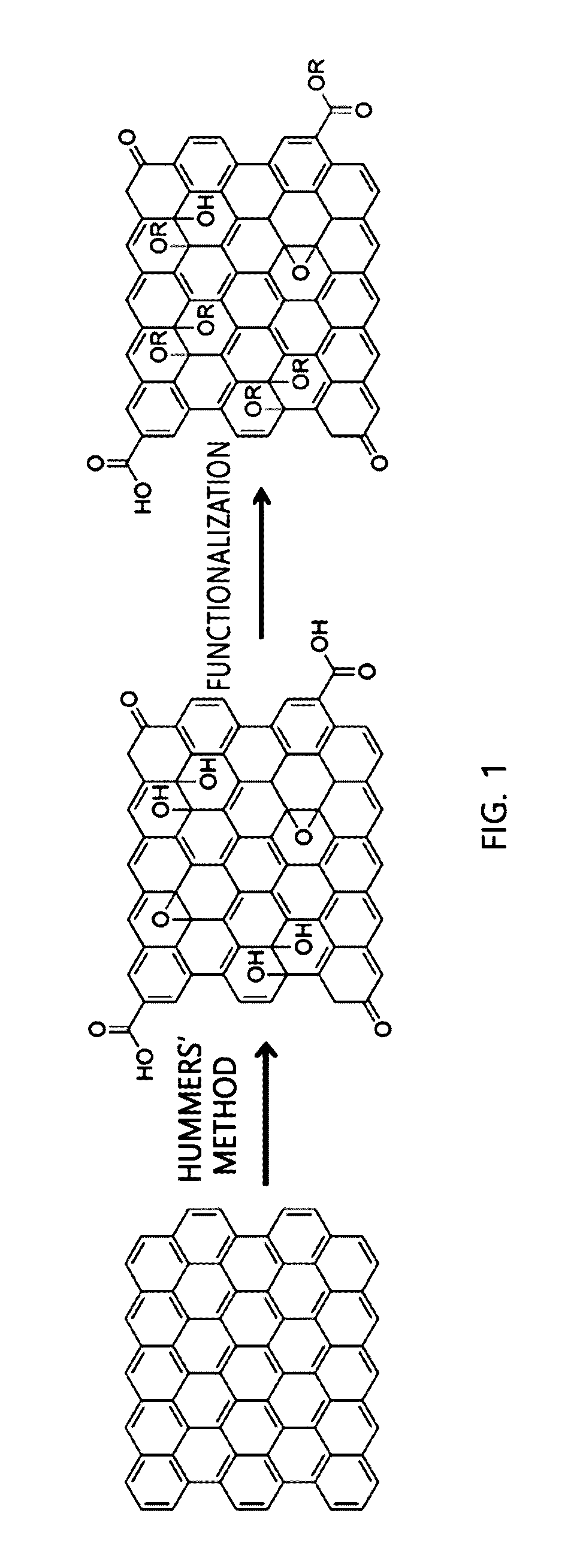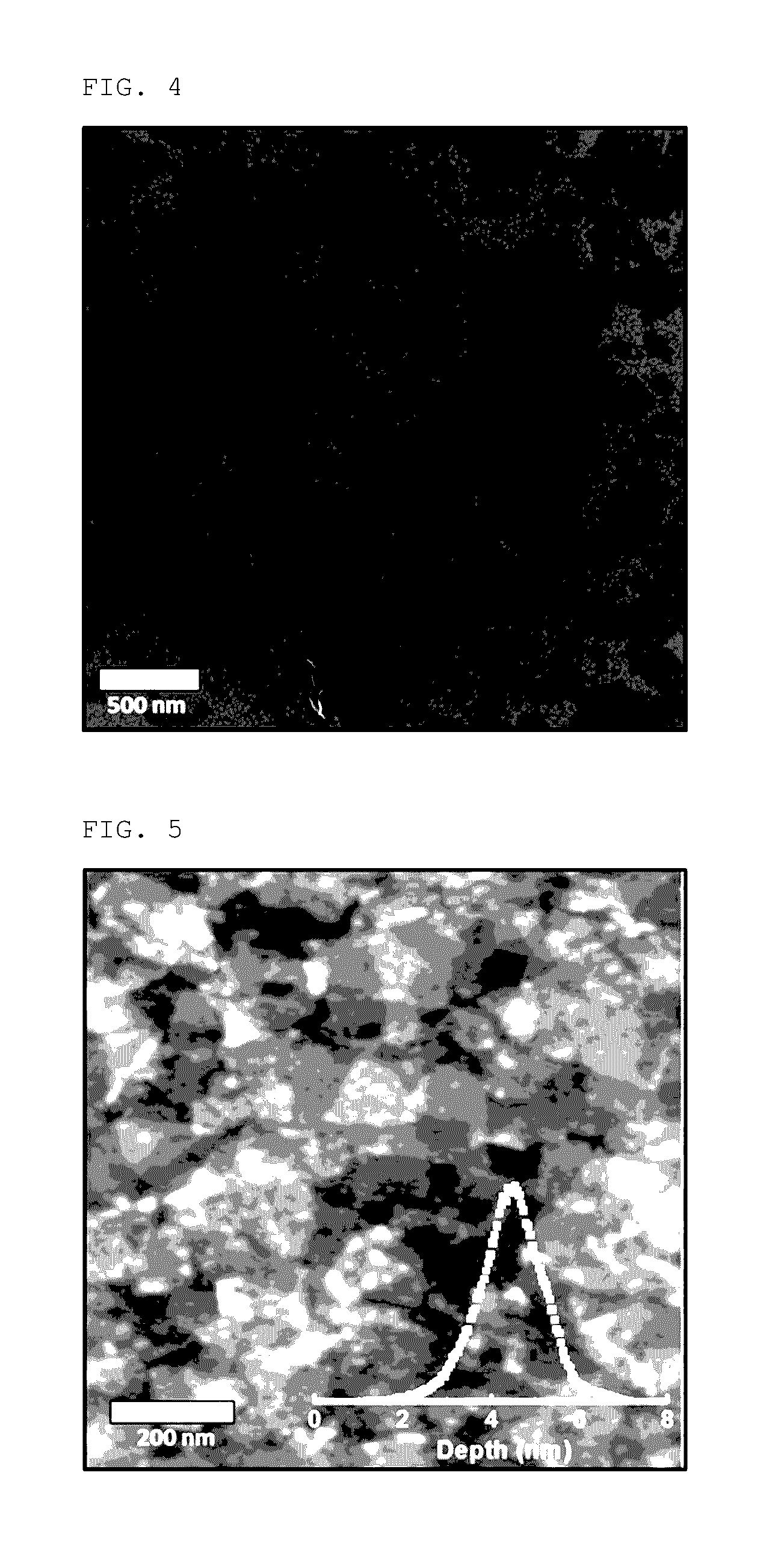Graphene oxide nanocomposite membrane for gas separation, reduced graphene oxide nanocomposite membrane, and method for manufacturing the same
a graphene oxide nanocomposite membrane and gas separation technology, applied in the field of graphene oxide nanocomposite membrane for gas separation, a reduction of graphene oxide nanocomposite membrane and a manufacturing method, can solve the problems of low permeability and selectivity, disadvantageous inapplicability, and the functionalization of graphene-containing composite membrane to the membrane for gas separation is neither disclosed nor suggested, and achieve excellent gas permeability and selectivity, enhanced hydrogen gas permeability and sel
- Summary
- Abstract
- Description
- Claims
- Application Information
AI Technical Summary
Benefits of technology
Problems solved by technology
Method used
Image
Examples
example 1
[0083]An aqueous graphene oxide solution, which has a pH adjusted to 10.0 using 0.1 wt % of 1M aqueous sodium hydroxide solution, was obtained from graphene oxide prepared by Hummers' method. The aqueous solution containing the graphene oxide dispersed therein was treated with an ultrasonic grinder for 6 hours and a polyethersulfone (PES) support was spin-coated with 1 mL of the graphene oxide dispersion 5 times to produce a nanocomposite membrane (GO membrane) having a graphene oxide coating layer formed thereon, as shown in FIG. 2.
example 2
[0084]A solution containing hydroiodic acid (HI) and acetic acid mixed in a ratio of 2:5 was incorporated in a reactor and hydroiodic acid (HI) vapor was reacted with the graphene oxide nanocomposite membrane produced in Example 1 at 40° C. for 24 hours to produce a reduced graphene oxide nanocomposite membrane (rGO membrane) by vapor reduction.
examples 3 to 6
[0085]Graphene oxide nanocomposite membranes were produced in the same manner as in Example 1, except that polyethersulfone (PES) [Example 3], polysulfone (PSF) [Example 4], polyacrylonitrile (PAN) [Example 5] and polyvinylidene fluoride (PVDF) [Example 6] were used as supports, the supports were treated with oxygen plasma at 50 W for 3 minutes and the surfaces of the supports were pre-treated by spin-coating with a polyetherimide (PEI) or polyvinyl pyrrolidone (PVP) solution (5 wt %) as a nitrogen atom-containing substance to dope the surfaces with nitrogen.
PUM
| Property | Measurement | Unit |
|---|---|---|
| thickness | aaaaa | aaaaa |
| surface roughness | aaaaa | aaaaa |
| contact angle | aaaaa | aaaaa |
Abstract
Description
Claims
Application Information
 Login to View More
Login to View More - R&D
- Intellectual Property
- Life Sciences
- Materials
- Tech Scout
- Unparalleled Data Quality
- Higher Quality Content
- 60% Fewer Hallucinations
Browse by: Latest US Patents, China's latest patents, Technical Efficacy Thesaurus, Application Domain, Technology Topic, Popular Technical Reports.
© 2025 PatSnap. All rights reserved.Legal|Privacy policy|Modern Slavery Act Transparency Statement|Sitemap|About US| Contact US: help@patsnap.com



